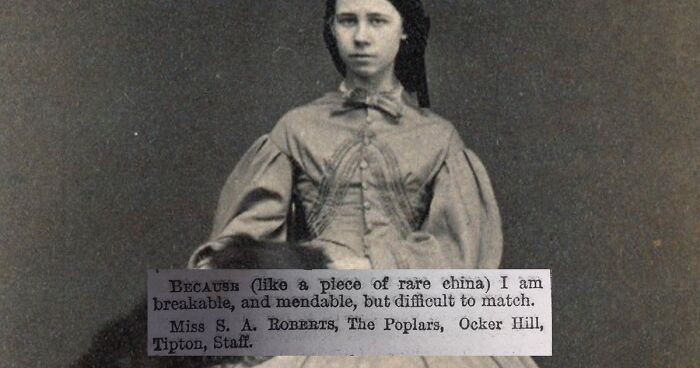
Magazine In 1889 Asked Women Why They Are Single, Receive Hilariously Badass Answers
If you think your folks give you a hard time for not marrying, try being a woman in the Victorian era. For single ladies of those times, public ridicule was the norm.
Luckily, many of them grew thick skin because of it and wouldn’t succumb to jokes about their relationship status. Instead, they fired back in a witty fashion.
While studying an 1889 edition of Tit-Bits Magazine, historian Dr. Bob Nicholson, who runs a blog called The Digital Victorianist, came across an interesting article — the publishers offered a prize to the spinster who could provide the best answer to the question why is she single, and got so many savage replies, they couldn’t pick just one.
Women in Victorian society had one main duty in life, which was to marry and serve their husband
Image credits: Library of Congress
But as this old article shows, not all of them did
Image credits: DigiVictorian
Image credits: DigiVictorian
Image credits: DigiVictorian
Image credits: DigiVictorian
We managed to get in touch with Dr. Nicholson and he was kind enough to have a little chat with us about his now-viral post was discovered.
“I’m a historian who specializes in the history of Victorian pop culture,” Dr. Nicholson told Bored Panda. “I was searching through old issues of Tit-Bits magazine in search of nineteenth-century jokes, and I happened across the ‘Why am I a Spinster?’ competition by accident. This is one of the best things about researching Victorian magazines — you never know what you might find on the next page!”
Image credits: Library of Congress
Image credits: DigiVictorian
Image credits: DigiVictorian
Image credits: New York Public Library
Image credits: DigiVictorian
Image credits: DigiVictorian
Image credits: DigiVictorian
To understand the roles of women and men in Victorian England, we can take a look at what John Ruskin wrote in Sesame and Lilies (1865).
“The man’s power is active, progressive, defensive. He is eminently the doer, the creator, the discoverer, the defender. His intellect is for speculation, and invention; his energy for adventure war, and for conquest,” Ruskin said. “But the woman’s power is for rule, not for battle – and her intellect is not for invention or creation, but for sweet ordering, arrangement, and decision… she must be enduringly, incorruptibly good; instinctively, infallibly wise, wise not for self-development, but for self-renunciation: wise, not that she may set herself above her husband, but that she may never fail from his side.”
In this quote, the art critic and prominent social thinker highlights the strict gender ideals and stereotypes that were common back then; men and women were allocated specific roles which led men to hold more power over women, and therefore significantly disadvantaged them during this era.
Historians call this ‘separate spheres‘, and it rested on a definition of the ‘natural’ characteristics of women and men. Women were considered physically weaker (yet morally superior to men), which meant that they were best suited to the domestic sphere.
Furthermore, before 1870, any money made by a woman (either through a wage, from investment, by gift, or through inheritance) instantly became the property of her husband once she was married, with the exception of a dowry. The identity of the wife became legally absorbed into that of her husband, effectively making them one person under the law.
Image credits: Library of Congress
Image credits: DigiVictorian
Image credits: DigiVictorian
However, as we can see, there were exceptions. “I love finding evidence that challenges our assumptions about life in the nineteenth century,” Dr. Nicholson said.
“Some people imagine Victorian women to have been prudish, reserved, and submissive to men — but many of the ‘spinsters’ who entered that competition were anything but. They were witty, irreverent, and proudly independent. I thought that was worth sharing.”
“I’m not sure I’d go so far as to call the article progressive, but it does a good job of subverting the jokes that were usually told at women’s expense,” the historian explained, adding that classic Victorian ‘spinster’ jokes typically presented them as either desperate to find a man (any man, really), or spiteful because they had been left on the shelf.
“There are hints of these misogynistic stereotypes in the Tit-Bits’ article, but they also give a voice to women who comically assert their happiness at being single, and use the chance to mock men. This wasn’t unheard of in Victorian humor, but it does go against the grain.”
Image credits: Library of Congress
Image credits: DigiVictorian
Image credits: DigiVictorian
Founded in 1881, Tit-Bits From All The Most Interesting Books, Periodicals and Newspapers in The World, often referred to as just Tit-Bits, was a British weekly magazine that paved the way for popular journalism.
“Tit-Bits ran their competition at a time when the so-called ‘woman question’ was becoming increasingly debated in Victorian society,” Dr. Nicholson said. “Many women were beginning to push for more rights and opportunities, including the right to be defined by more than just their marriage. I think the responses Tit-Bits received — and the fact that they printed them — hints at these changing attitudes.”
Image credits: DigiVictorian
Image credits: DigiVictorian
Image credits: DigiVictorian
People absolutely loved the amusing thread
Image credits: Suw
Image credits: liliales
Image credits: NicholaDeadman
Image credits: 0xabad1dea
Image credits: emma_mp
Image credits: arborlowenviron
Image credits: MittereMary
Image credits: ilrosso_
Did anyone else read these with a fake Victorian-era British accent? No? Just me? OK...
To be fair I also thought the house numbers were ages because one, I was not familiar with a comma placed like that, two what a world to live in where a single woman could have her address published and be safe?!?!? So how could it be a house number? My mind couldn't comprehend it. Also, sadly, I was more concerned that if 12 year knew Taming of the Shrew back then and kids today aren't even sure about what happened in WWII we were screwed. Sadly still true but at least it wasn't an actual 12 year old.
Oh my gosh me too I was like how is this 8 year old so eloquent lol. Wow I feel dumb.
Load More Replies..."The reason I am still single is because I have never met a man who deserves to be as happy as I can make him." This was told to me by a woman in her 70s and I still think it's awesome!
I too ham waiting fir a fancy erle or a dook or sumthin. Perleesmen or solejeers needent apply I’ll ave nae violens in me ouse!
Tit-bits magazine? Really? We're going to pretend we're all too mature to notice that?
Exactly what I was thinking!! I see that this article was written back in the late 1800's, and that they wanted 'spinsters' to reply. Then I see the name of the publication and I let out a laugh 😅😅😅
Load More Replies...Newspapers and magazines routinely published full addresses until at least the 1970s!
Most women didn't have the luxury of actually choosing to remain single unless they had a degree of financial security. The one who wrote in broken English may have had work as a washer woman or char lady but still preferred singleness or a possible husband that was a drunk, a gambler or a wife-beater. Many poor women saw the dismal marriages of their mothers and didn't want that for themselves.
The lady with broken English wrote that she had a considerable amount of money... Did you even read it? She's a cook. And said she'd prefer a guy of higher status.
Load More Replies...I wonder how most of these women supported themselves--as their addresses are included, I imagine this information is available with enough digging!
Mad they just have their whole a** address printed in the paper. Never would get that now
Why would you be Mad about these ladies addresses being published?? It sounds as if that was the norm and they would've expected to see their address under their comments, I'm sure. It is NOT SAFE anymore to do such a thing, but I wouldn't get mad over something that didn't effect you; Nor can it be changed at this point. I would be really mad if that were to happen to anyone at this point in time.
Load More Replies...When you see how incredibly well spoken some the these women are at very young ages it really drives home what a sucky education we are getting these days.
It is possible that most of these were wealthy educated women. For a woman to be able to be a spinster and support herself, she must have had a trade or family that could afford to support her.
Load More Replies...From "The Laconic Lexicon," a contrarian dictionary: MARRIAGE, n.: contractual obligation between two parties sanctioned by the state for license fees and urged by the church for the creation of victims. Its chief peculiarities are two. The first is that it is the only penal institution with elective inmates. The second is that its contracting parties seldom get the spouses they deserve. That is a matter of undeserved good fortune to the husband and eternal chagrin to the wife. Thus it is a wonderment that single women still compete to catch bouquets at wedding banquets. The arrangement may be terminated by divorce (which see), which is the recommended process, as alternatives may lead to legal action. From Willa Cather: The trouble is you almost have to marry a man before you can find out the sort of wife he needs; and usually it's exactly the sort you are not. I much like the idea of including names and addresses. and Twitter would be much more civil if they insisted on the same.
Why am I a spinster? Because I'm married to a woman perhaps?
I used to belong to a social group on one of the computer sites. The group was somewhat equally split between men and woman. A frequent question always asked was. What do woman want. There were always assorted answers. With no resolve as to what the true answer might be. My answer was always. They want to be free of the roles assigned to them because they are a woman and would much rather be allowed to be and do what they want to be. This article kind of proves that I was on the right track.
I really enjoyed these!! I had to zoom in on and squint at the full page to get the responses they left out - there were some really excellent ones that didn't fit with the overall 'sassy pro-spinster' spin of the article. I loved this one: "A spinster am I, and the reason is this, Did ever a suitor propose To press on my lips a lover-like kiss I scornfully turned up my nose I wished Mr. Right 'to come up to the scratch' And happy and careless I stayed; But left I now am without any mate A cappy and hairless old maid!" 😂 And they say women aren't funny! Such humor and wit and not a single crass or disgusting joke - I'd love to hear comediennes with this much class nowadays.
Absolutely love this! Must have been so liberating for these women to have this (probably extremely rare) opportunity to show off their wit, charm and fierce independence! You go girls!
Wondering what she meant by "an setterar", I understood the rest but can't figure this one out!
Anna H - im not confident about this answer, but my initial thought was "et cetera". Upon rereading it, I have not yet thought of a more likely interpretation.
Load More Replies...Quoting John Ruskin on anything concerning women or marriage is too much! Look up him and his marriage to Effie Gray!
Probably because they were either fat, whores or just completely undesirable and they want to blame everyone but themselves.
Or maybe they were very capable women, not unlike the women of today, who do not need to define themselves by having a man in their life, and are more deserving of accolades than trite insults by some lonely incel.
Load More Replies...Some are kinda mean. The first one in particular. Not all men are mean, not all women are mean, that being said some men are mean, and some women are mean, soooooo (I know I’m gonna get downvoted 1,000,000) technically… this is gender racist *I said in a squeaky voice.* And many people might ask how so I’ll explain, saying that all men are mean, bitter, selfish people but some are caring, generous, souls that deserve to be noticed for that and it’s only gender racist because they don’t give a real reason except for “they’re men”. Don’t get me wrong! Some men are JERKS and I completely understand why women wouldn’t want to be married/engaged I someone like that. So in conclusion men are jerks women are jerks, men are cool women are cool. One more thing people look at the U.S. as the worst gender equality in the world but China passed a law that would SLAUGHTER WOMEN CHILDREN and Yemen barely let women get good education or jobs!
During this time period, men were in charge and women had nothing. If men were to say these things about women, it's like punching down. You just don't punch down when you're already winning. You're getting offended that oppressed people don't kiss men's asses, and it's weird.
Load More Replies...as another comment said it is likely that those are the house numbers not the age
Load More Replies...Did anyone else read these with a fake Victorian-era British accent? No? Just me? OK...
To be fair I also thought the house numbers were ages because one, I was not familiar with a comma placed like that, two what a world to live in where a single woman could have her address published and be safe?!?!? So how could it be a house number? My mind couldn't comprehend it. Also, sadly, I was more concerned that if 12 year knew Taming of the Shrew back then and kids today aren't even sure about what happened in WWII we were screwed. Sadly still true but at least it wasn't an actual 12 year old.
Oh my gosh me too I was like how is this 8 year old so eloquent lol. Wow I feel dumb.
Load More Replies..."The reason I am still single is because I have never met a man who deserves to be as happy as I can make him." This was told to me by a woman in her 70s and I still think it's awesome!
I too ham waiting fir a fancy erle or a dook or sumthin. Perleesmen or solejeers needent apply I’ll ave nae violens in me ouse!
Tit-bits magazine? Really? We're going to pretend we're all too mature to notice that?
Exactly what I was thinking!! I see that this article was written back in the late 1800's, and that they wanted 'spinsters' to reply. Then I see the name of the publication and I let out a laugh 😅😅😅
Load More Replies...Newspapers and magazines routinely published full addresses until at least the 1970s!
Most women didn't have the luxury of actually choosing to remain single unless they had a degree of financial security. The one who wrote in broken English may have had work as a washer woman or char lady but still preferred singleness or a possible husband that was a drunk, a gambler or a wife-beater. Many poor women saw the dismal marriages of their mothers and didn't want that for themselves.
The lady with broken English wrote that she had a considerable amount of money... Did you even read it? She's a cook. And said she'd prefer a guy of higher status.
Load More Replies...I wonder how most of these women supported themselves--as their addresses are included, I imagine this information is available with enough digging!
Mad they just have their whole a** address printed in the paper. Never would get that now
Why would you be Mad about these ladies addresses being published?? It sounds as if that was the norm and they would've expected to see their address under their comments, I'm sure. It is NOT SAFE anymore to do such a thing, but I wouldn't get mad over something that didn't effect you; Nor can it be changed at this point. I would be really mad if that were to happen to anyone at this point in time.
Load More Replies...When you see how incredibly well spoken some the these women are at very young ages it really drives home what a sucky education we are getting these days.
It is possible that most of these were wealthy educated women. For a woman to be able to be a spinster and support herself, she must have had a trade or family that could afford to support her.
Load More Replies...From "The Laconic Lexicon," a contrarian dictionary: MARRIAGE, n.: contractual obligation between two parties sanctioned by the state for license fees and urged by the church for the creation of victims. Its chief peculiarities are two. The first is that it is the only penal institution with elective inmates. The second is that its contracting parties seldom get the spouses they deserve. That is a matter of undeserved good fortune to the husband and eternal chagrin to the wife. Thus it is a wonderment that single women still compete to catch bouquets at wedding banquets. The arrangement may be terminated by divorce (which see), which is the recommended process, as alternatives may lead to legal action. From Willa Cather: The trouble is you almost have to marry a man before you can find out the sort of wife he needs; and usually it's exactly the sort you are not. I much like the idea of including names and addresses. and Twitter would be much more civil if they insisted on the same.
Why am I a spinster? Because I'm married to a woman perhaps?
I used to belong to a social group on one of the computer sites. The group was somewhat equally split between men and woman. A frequent question always asked was. What do woman want. There were always assorted answers. With no resolve as to what the true answer might be. My answer was always. They want to be free of the roles assigned to them because they are a woman and would much rather be allowed to be and do what they want to be. This article kind of proves that I was on the right track.
I really enjoyed these!! I had to zoom in on and squint at the full page to get the responses they left out - there were some really excellent ones that didn't fit with the overall 'sassy pro-spinster' spin of the article. I loved this one: "A spinster am I, and the reason is this, Did ever a suitor propose To press on my lips a lover-like kiss I scornfully turned up my nose I wished Mr. Right 'to come up to the scratch' And happy and careless I stayed; But left I now am without any mate A cappy and hairless old maid!" 😂 And they say women aren't funny! Such humor and wit and not a single crass or disgusting joke - I'd love to hear comediennes with this much class nowadays.
Absolutely love this! Must have been so liberating for these women to have this (probably extremely rare) opportunity to show off their wit, charm and fierce independence! You go girls!
Wondering what she meant by "an setterar", I understood the rest but can't figure this one out!
Anna H - im not confident about this answer, but my initial thought was "et cetera". Upon rereading it, I have not yet thought of a more likely interpretation.
Load More Replies...Quoting John Ruskin on anything concerning women or marriage is too much! Look up him and his marriage to Effie Gray!
Probably because they were either fat, whores or just completely undesirable and they want to blame everyone but themselves.
Or maybe they were very capable women, not unlike the women of today, who do not need to define themselves by having a man in their life, and are more deserving of accolades than trite insults by some lonely incel.
Load More Replies...Some are kinda mean. The first one in particular. Not all men are mean, not all women are mean, that being said some men are mean, and some women are mean, soooooo (I know I’m gonna get downvoted 1,000,000) technically… this is gender racist *I said in a squeaky voice.* And many people might ask how so I’ll explain, saying that all men are mean, bitter, selfish people but some are caring, generous, souls that deserve to be noticed for that and it’s only gender racist because they don’t give a real reason except for “they’re men”. Don’t get me wrong! Some men are JERKS and I completely understand why women wouldn’t want to be married/engaged I someone like that. So in conclusion men are jerks women are jerks, men are cool women are cool. One more thing people look at the U.S. as the worst gender equality in the world but China passed a law that would SLAUGHTER WOMEN CHILDREN and Yemen barely let women get good education or jobs!
During this time period, men were in charge and women had nothing. If men were to say these things about women, it's like punching down. You just don't punch down when you're already winning. You're getting offended that oppressed people don't kiss men's asses, and it's weird.
Load More Replies...as another comment said it is likely that those are the house numbers not the age
Load More Replies...
 Dark Mode
Dark Mode 

 No fees, cancel anytime
No fees, cancel anytime 



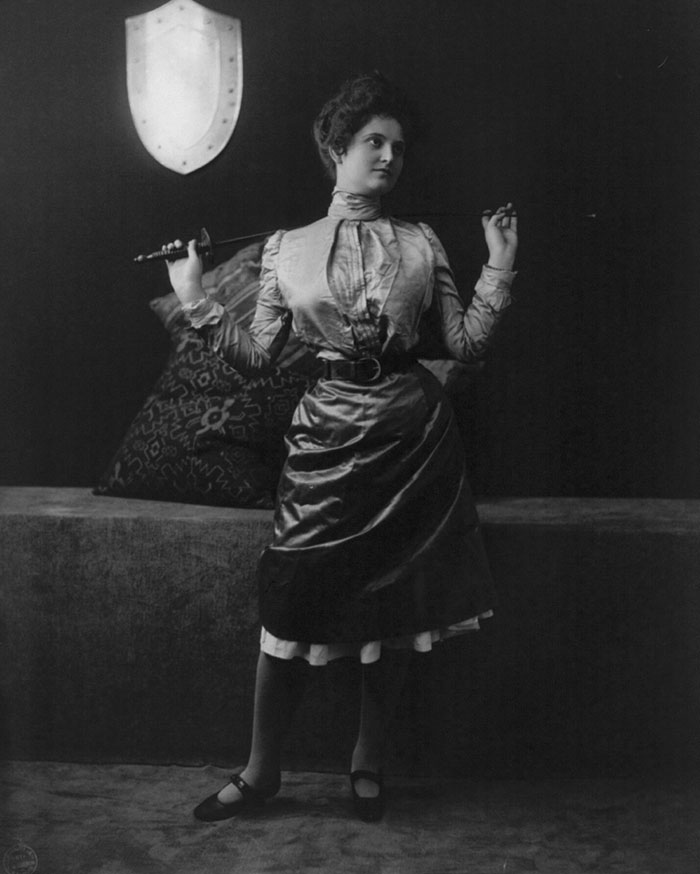
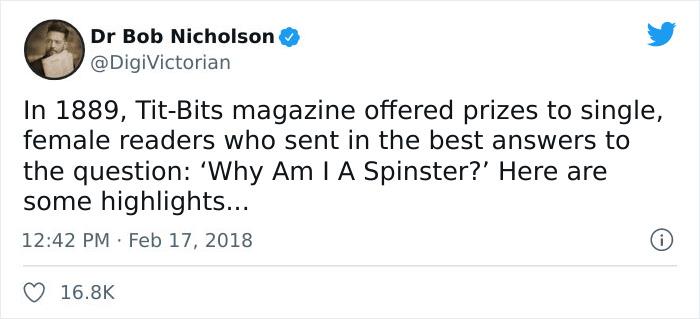
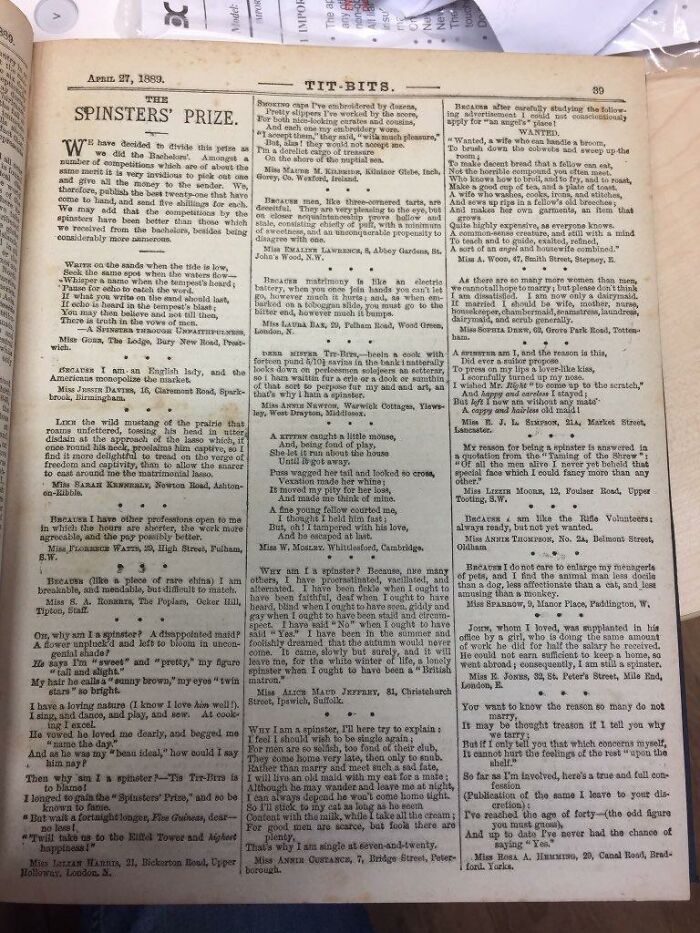
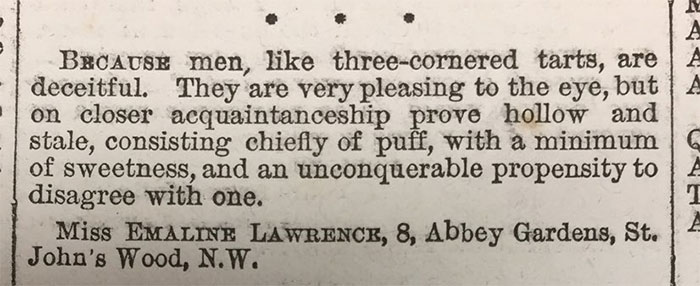
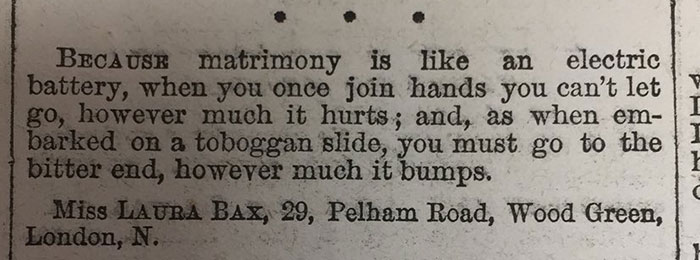
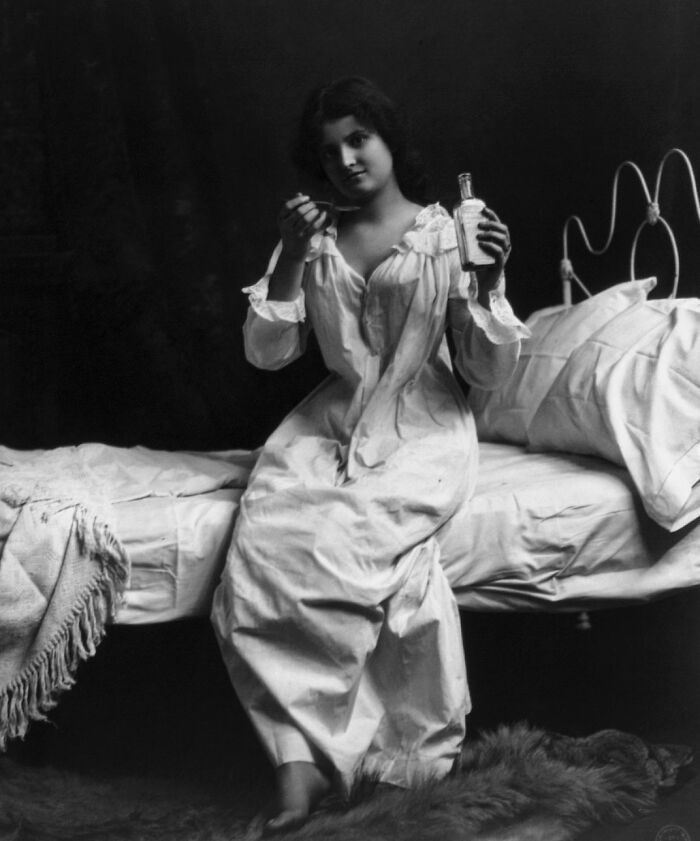
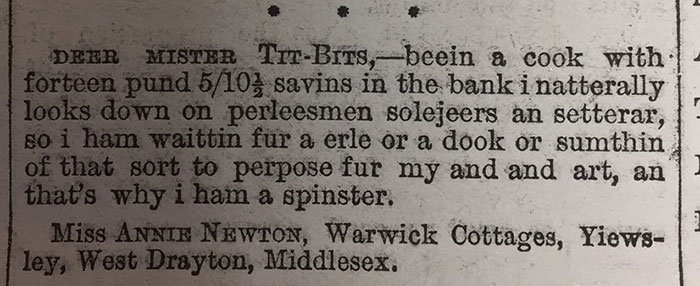
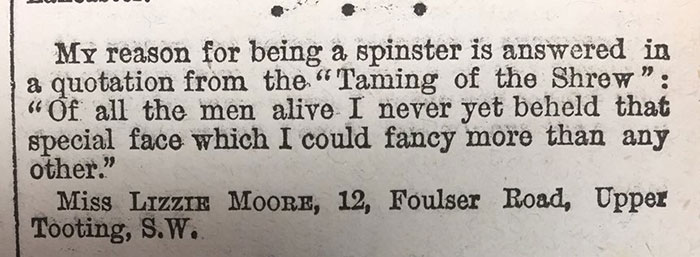
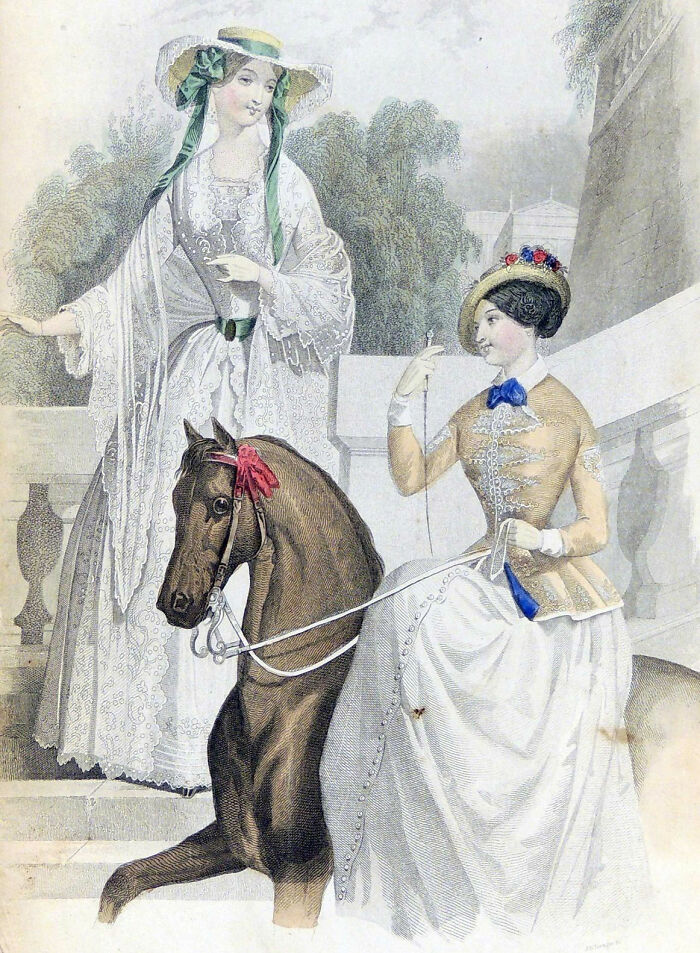


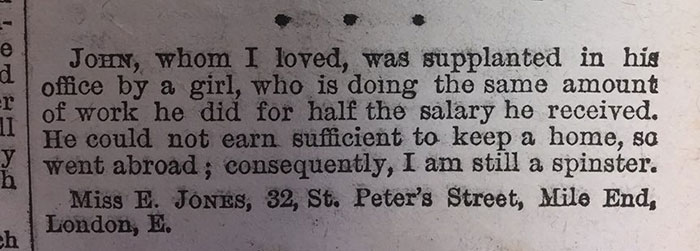
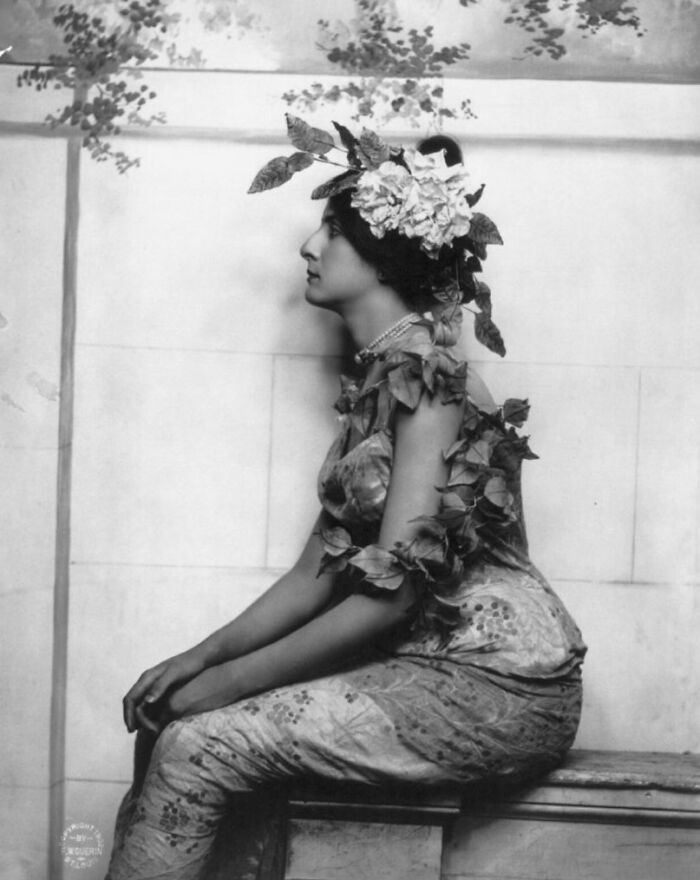

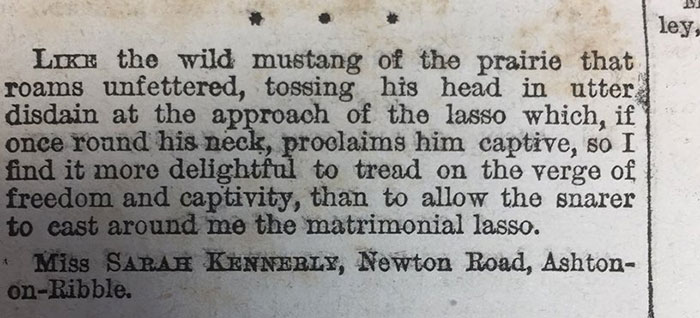
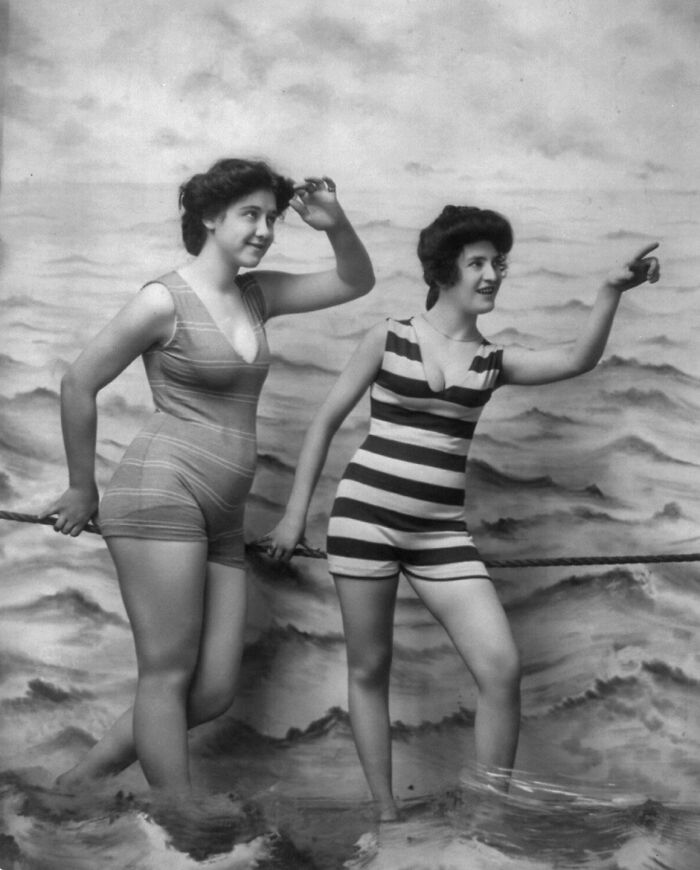


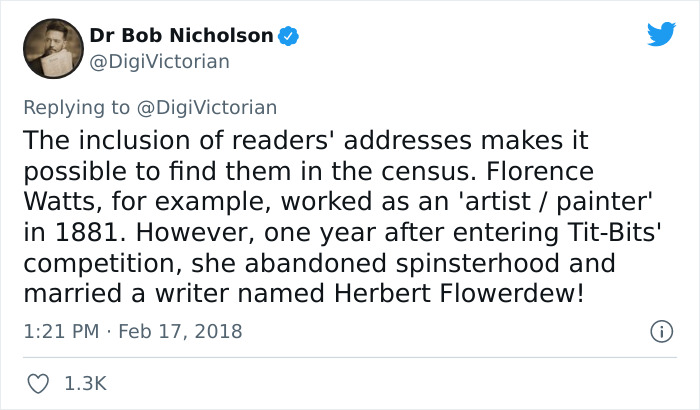
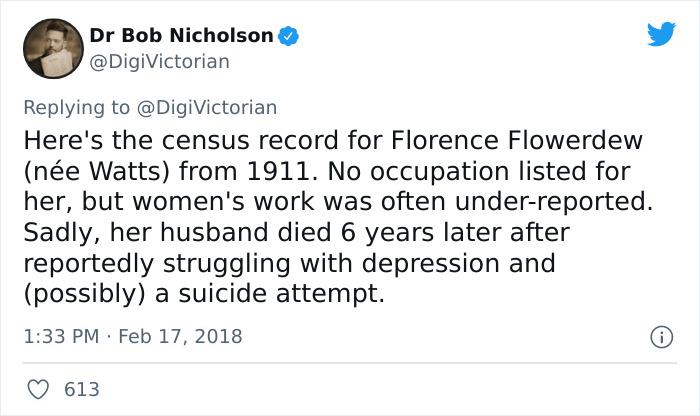
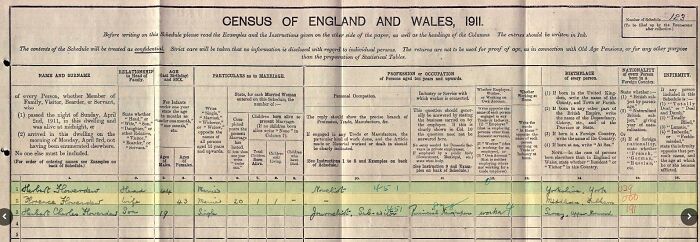


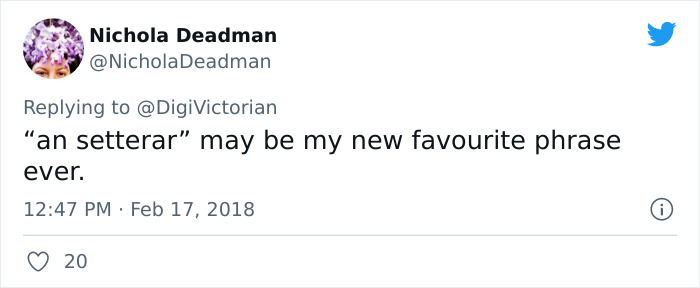
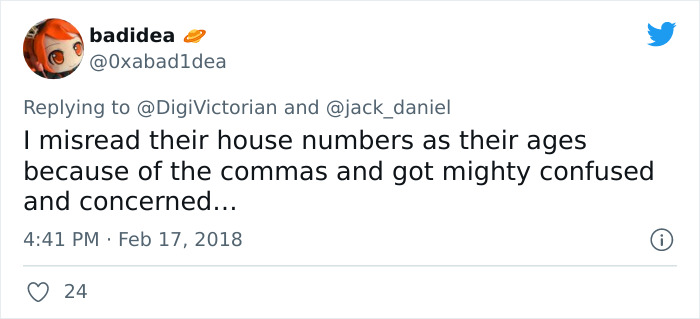
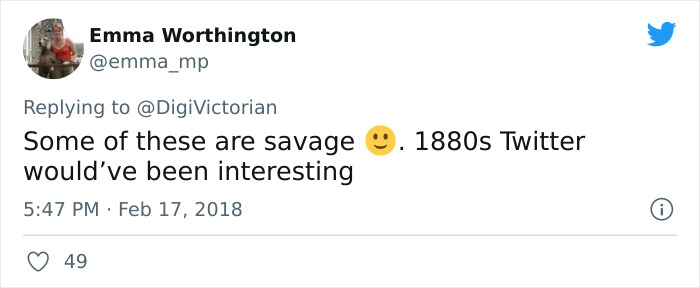
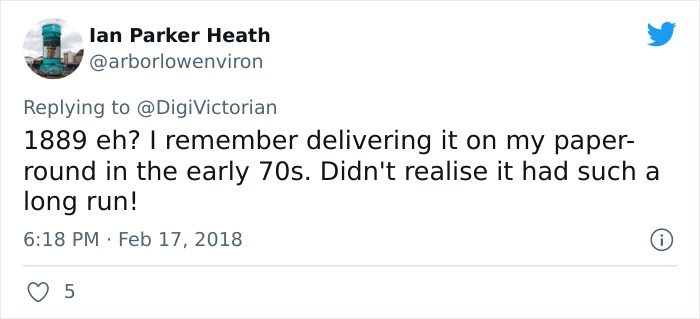

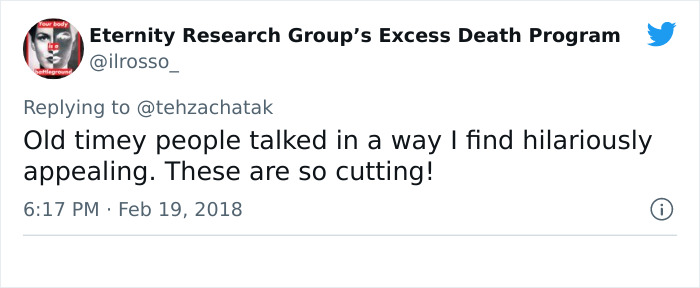






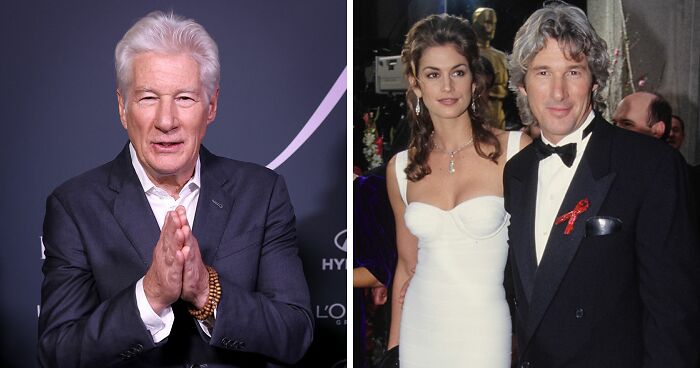




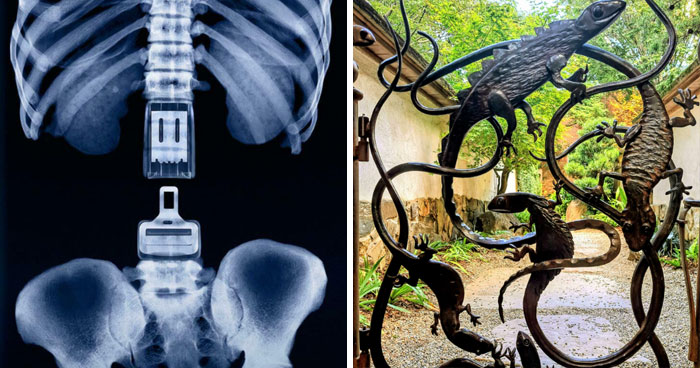



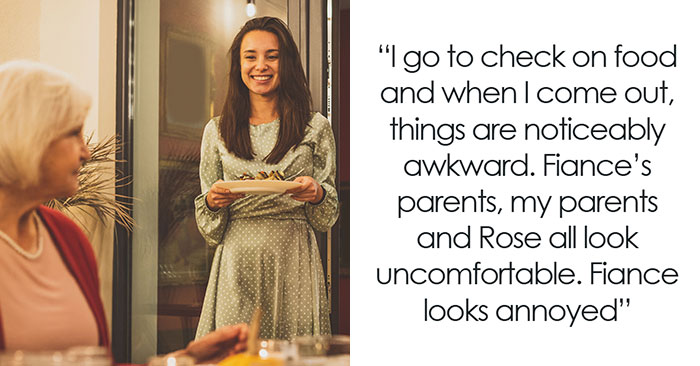
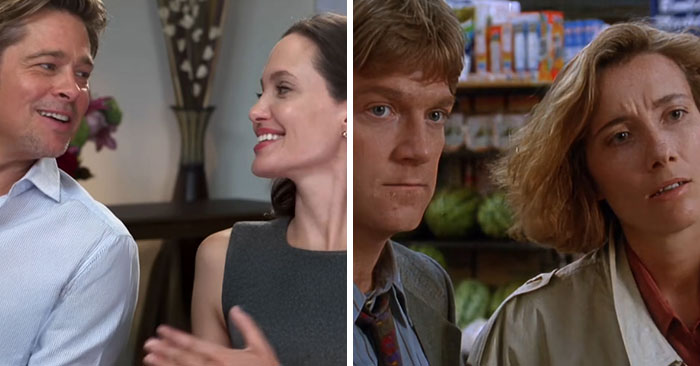






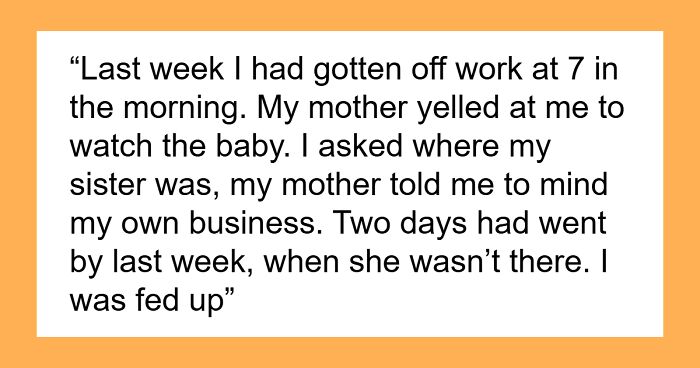

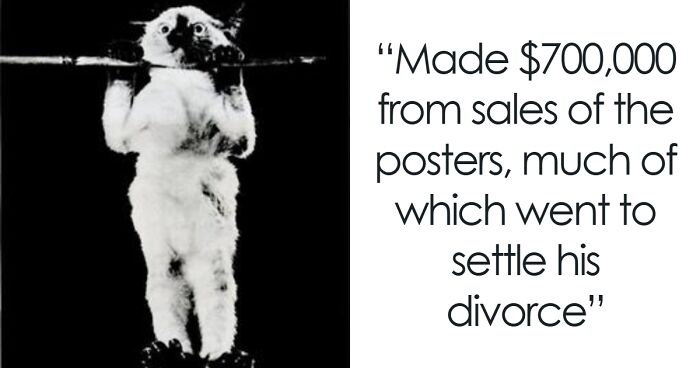

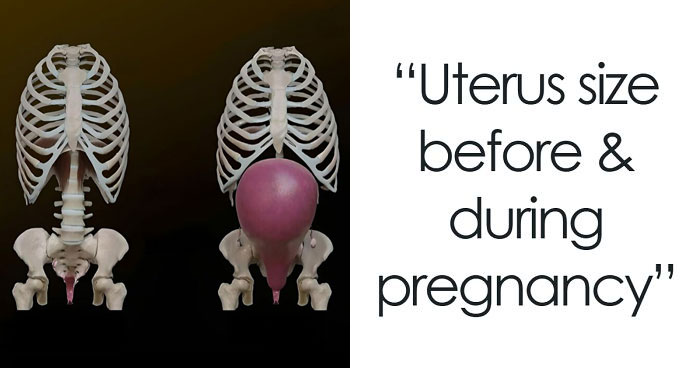


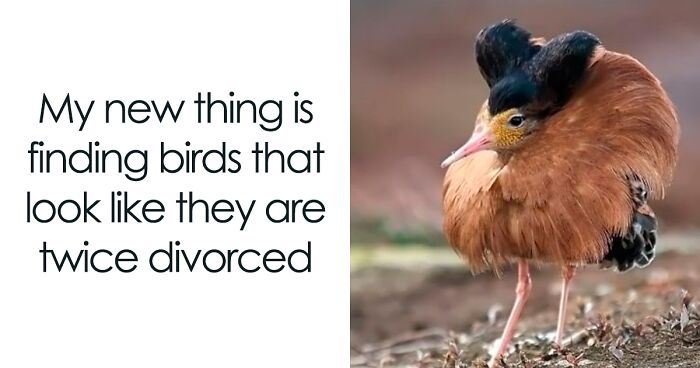



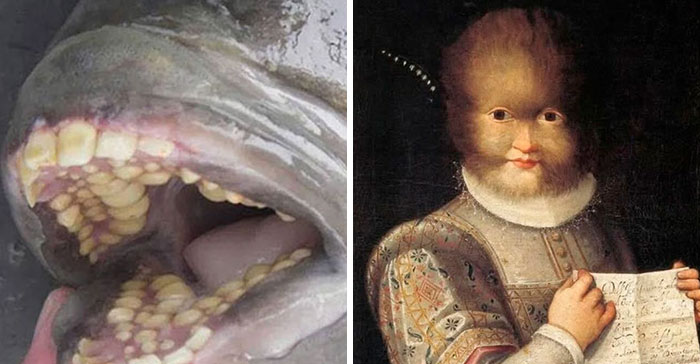






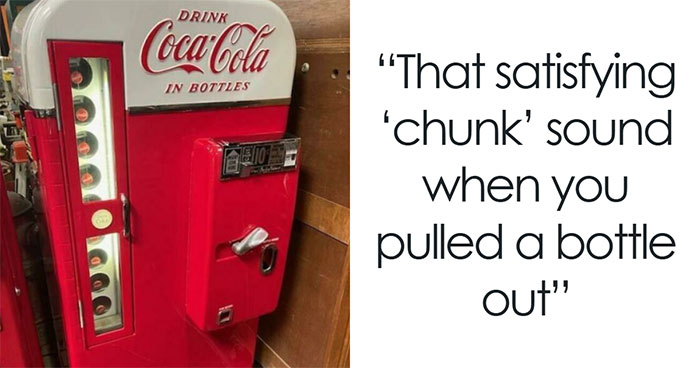


242
87